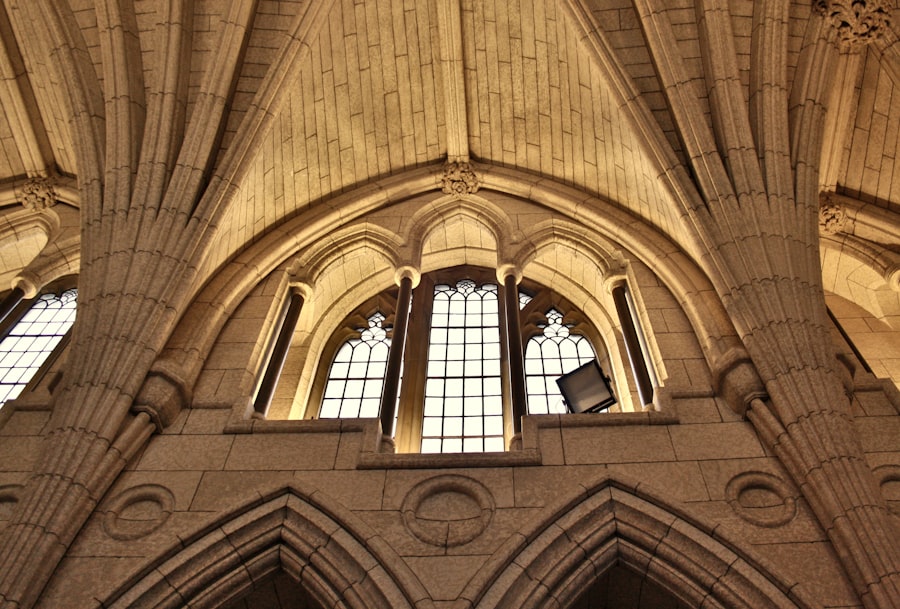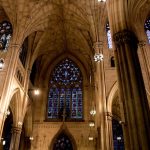Download links
How to install 8k8 Manila Cathedral: A Historic Icon in the Philippines APK?
1. Tap the downloaded 8k8 Manila Cathedral: A Historic Icon in the Philippines APK file.
2. Touch install.
3. Follow the steps on the screen.
Description
The Manila Cathedral, officially known as the Cathedral-Basilica of the Immaculate Conception, has a rich and storied history that reflects the broader narrative of the Philippines itself. The site where the cathedral stands has been a place of worship since the Spanish colonial period, with the first church constructed in 1581. This initial structure was made of bamboo and nipa palm, a humble beginning that belied the grandeur that would eventually characterize the cathedral.
Over the years, the church underwent several reconstructions due to natural disasters, including earthquakes and fires, which were frequent in the region. Each iteration of the cathedral not only aimed to restore its former glory but also to adapt to the evolving needs of the growing Catholic community in Manila. The most significant reconstruction occurred after World War II when the cathedral was almost completely destroyed during the liberation of Manila in 1945.
The post-war era saw a renewed commitment to rebuilding, leading to the current structure that was completed in 1958. Designed by architect Fernando Ocampo, this version of the cathedral incorporated elements of modernist architecture while still paying homage to its historical roots. The Manila Cathedral has since been elevated to the status of a basilica by Pope Paul VI in 1976, recognizing its importance as a center of Catholic worship and its role in the spiritual life of Filipinos.
Key Takeaways
- Manila Cathedral was first built in 1571 and has been destroyed and rebuilt several times due to natural disasters and wars.
- The architectural features of Manila Cathedral include a combination of Romanesque, Renaissance, and Baroque styles, with intricate carvings and stained glass windows.
- Significant events at Manila Cathedral include the canonization of the first Filipino saint, Lorenzo Ruiz, and the visit of Pope John Paul II in 1981.
- Restoration and preservation efforts have been ongoing, with the latest major restoration completed in 2014 to repair damage from a typhoon.
- Manila Cathedral plays a significant role in Filipino culture and society as a place of worship, a historical landmark, and a venue for important national events.
Architectural Features of Manila Cathedral
The architectural design of Manila Cathedral is a harmonious blend of Romanesque and Gothic styles, characterized by its grand façade and intricate details. The cathedral’s exterior is adorned with a series of impressive buttresses that not only serve a structural purpose but also enhance its aesthetic appeal. The façade features a large rose window, which is a hallmark of Gothic architecture, allowing natural light to filter into the interior while creating a stunning visual effect.
The use of local materials, such as bricks and stones, reflects the cultural identity of the Philippines and showcases the craftsmanship of Filipino artisans. Inside, the cathedral boasts a high vaulted ceiling that creates an atmosphere of reverence and awe. The altar is particularly noteworthy, featuring a stunning retablo that houses images of various saints and religious figures.
The use of stained glass windows throughout the interior adds to the ethereal quality of the space, casting colorful patterns on the stone floors as sunlight streams through.
These features not only serve a liturgical function but also contribute to the overall narrative of faith and devotion that permeates the cathedral.
Significant Events at Manila Cathedral

Throughout its history, Manila Cathedral has been the site of numerous significant events that have shaped both religious and national identity in the Philippines. One of the most notable occurrences was the funeral of President Manuel L. Quezon in 1944, which underscored the cathedral’s role as a national symbol during tumultuous times.
Quezon, who was instrumental in advocating for Philippine independence from American rule, was honored with a state funeral at the cathedral, attended by dignitaries and citizens alike. This event highlighted how the cathedral served not only as a place of worship but also as a venue for national mourning and celebration. Another significant event was the installation of Cardinal Jaime Sin as Archbishop of Manila in 1974.
Cardinal Sin played a pivotal role in advocating for democracy during the Marcos regime, particularly during the People Power Revolution in 1986. His leadership and moral authority were instrumental in mobilizing citizens against dictatorship, and his connection to Manila Cathedral further solidified its status as a center for social justice and political activism. The cathedral became a gathering place for those seeking solace and guidance during times of political unrest, reinforcing its importance in both spiritual and civic life.
Restoration and Preservation Efforts
| Effort | Metrics |
|---|---|
| Restoration Projects | Number of projects completed |
| Preservation Initiatives | Amount of historical sites preserved |
| Community Involvement | Number of volunteers engaged |
| Resource Allocation | Investment in restoration and preservation |
The preservation of Manila Cathedral has been an ongoing endeavor, reflecting both respect for its historical significance and recognition of its architectural value. After its destruction during World War II, extensive restoration efforts were undertaken to rebuild not just the physical structure but also to restore its cultural heritage. The restoration process involved meticulous research into historical documents and photographs to ensure that the new construction remained true to its original design while incorporating modern engineering techniques for safety and durability.
In recent years, additional restoration projects have focused on maintaining the integrity of both the interior and exterior elements of the cathedral. This includes efforts to restore stained glass windows that have faded over time and to repair stonework that has weathered due to environmental factors.
These initiatives not only preserve the physical structure but also keep alive the stories and traditions associated with this iconic landmark.
Manila Cathedral’s Role in Filipino Culture and Society
Manila Cathedral occupies a central place in Filipino culture and society, serving as a symbol of faith for millions of Catholics in the country. Its significance extends beyond religious observance; it embodies national identity and resilience. The cathedral has been a witness to pivotal moments in Philippine history, from colonial rule to independence movements, making it a repository of collective memory for Filipinos.
It stands as a testament to the enduring spirit of a nation that has faced numerous challenges yet continues to thrive. Moreover, Manila Cathedral plays an essential role in community life, hosting various religious events such as weddings, baptisms, and confirmations. These ceremonies are not merely personal milestones; they are communal celebrations that reinforce social bonds among families and communities.
The cathedral also serves as a venue for important liturgical events such as Christmas Masses and Holy Week observances, drawing thousands of worshippers who come together in shared faith and devotion. This communal aspect fosters a sense of belonging among Filipinos, making Manila Cathedral an integral part of their cultural fabric.
Visiting Manila Cathedral: What to See and Do

For those planning to visit Manila Cathedral, there are numerous aspects to explore that highlight its historical and architectural significance. Upon entering, visitors are often struck by the grandeur of the nave, which is lined with intricately designed columns leading up to the altar. The serene atmosphere invites contemplation and reflection, making it an ideal space for both prayer and appreciation of art.
Visitors can take time to admire the detailed craftsmanship evident in every corner, from the ornate carvings on wooden pews to the delicate patterns in stained glass windows. In addition to appreciating its architectural beauty, visitors can participate in various activities offered at the cathedral. Guided tours are available for those interested in learning more about its history and significance within Filipino culture.
These tours often include insights into specific artworks and architectural features that may go unnoticed without expert guidance. Furthermore, attending a Mass or special liturgical event provides an opportunity to experience firsthand the vibrant community life that thrives within these walls. Whether one is seeking spiritual solace or cultural enrichment, Manila Cathedral offers a multifaceted experience that resonates deeply with both locals and tourists alike.
In conclusion, Manila Cathedral stands as a monumental symbol of faith, history, and resilience within Filipino society. Its architectural beauty reflects centuries of cultural evolution while serving as a vital center for community life. As visitors explore its hallowed halls, they engage not only with a remarkable structure but also with a living testament to the enduring spirit of a nation shaped by faith and history.
If you’re interested in exploring more about 8k8 Manila Cathedral, you may also enjoy reading about the exciting and challenging games with the best graphics in the article 8k8 Laro: Permainan Seru dan Menantang. This article delves into the world of gaming and highlights some of the most engaging games with stunning visuals. It’s a great read for anyone looking to discover new and thrilling gaming experiences.
FAQs
What is the 8k8 Manila Cathedral?
The 8k8 Manila Cathedral is an article that discusses the historical and architectural significance of the Manila Cathedral in the Philippines.
When was the Manila Cathedral built?
The original Manila Cathedral was built in 1571, but it has been destroyed and rebuilt several times due to natural disasters and wars. The current structure was completed in 1958.
What is the architectural style of the Manila Cathedral?
The Manila Cathedral features a combination of architectural styles, including Baroque, Neo-Romanesque, and Neo-Byzantine influences.
What is the significance of the Manila Cathedral?
The Manila Cathedral is a symbol of the Catholic faith in the Philippines and has played a significant role in the country’s history, particularly during the Spanish colonial period.
Is the Manila Cathedral open to the public?
Yes, the Manila Cathedral is open to the public for worship, prayer, and tourism. Visitors are welcome to explore the cathedral’s interior and attend religious services.
Are there any restrictions for visitors at the Manila Cathedral?
Visitors are expected to dress modestly and respectfully when visiting the Manila Cathedral. Additionally, photography may be restricted in certain areas of the cathedral.
Can visitors attend mass at the Manila Cathedral?
Yes, the Manila Cathedral holds regular religious services, including Mass, which are open to the public. Visitors are welcome to participate in these services.
Is the Manila Cathedral a popular tourist attraction?
Yes, the Manila Cathedral is a popular tourist attraction in the Philippines, drawing visitors who are interested in its historical, cultural, and architectural significance.





